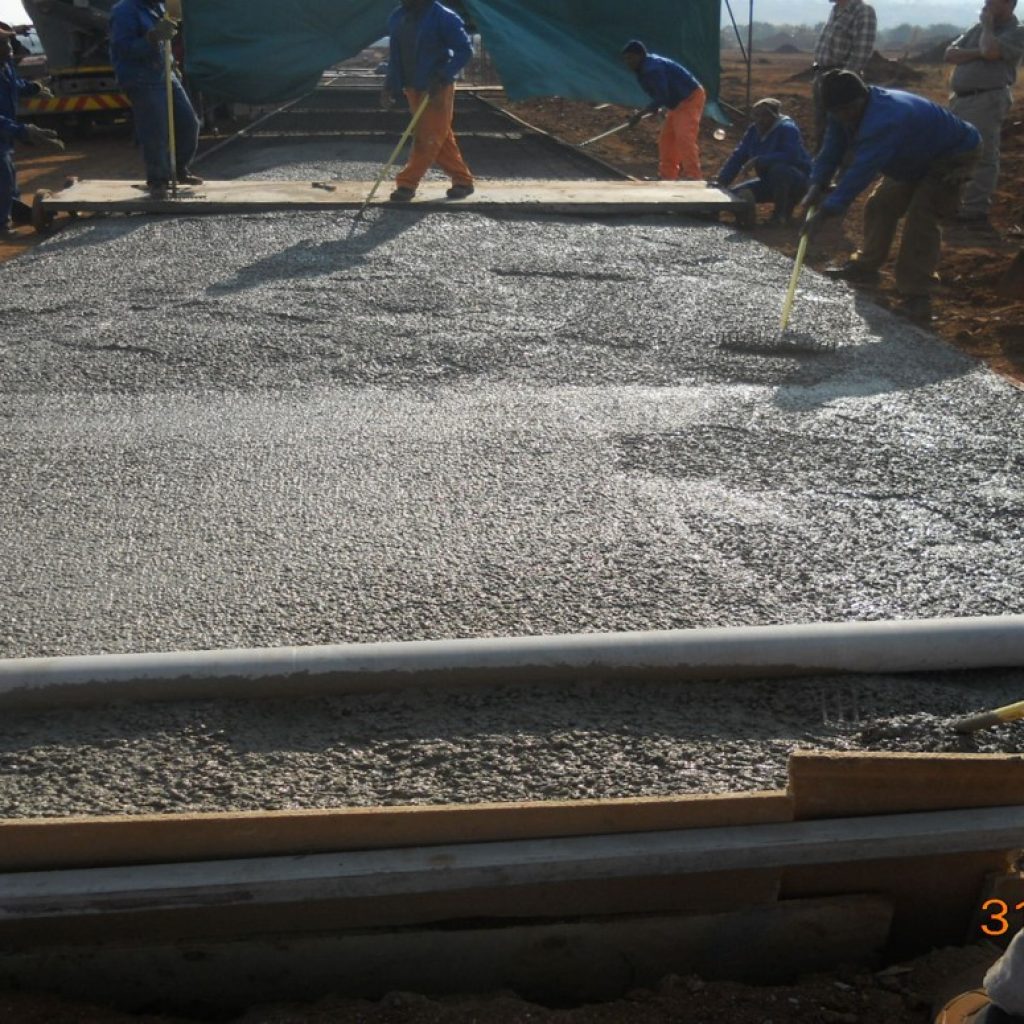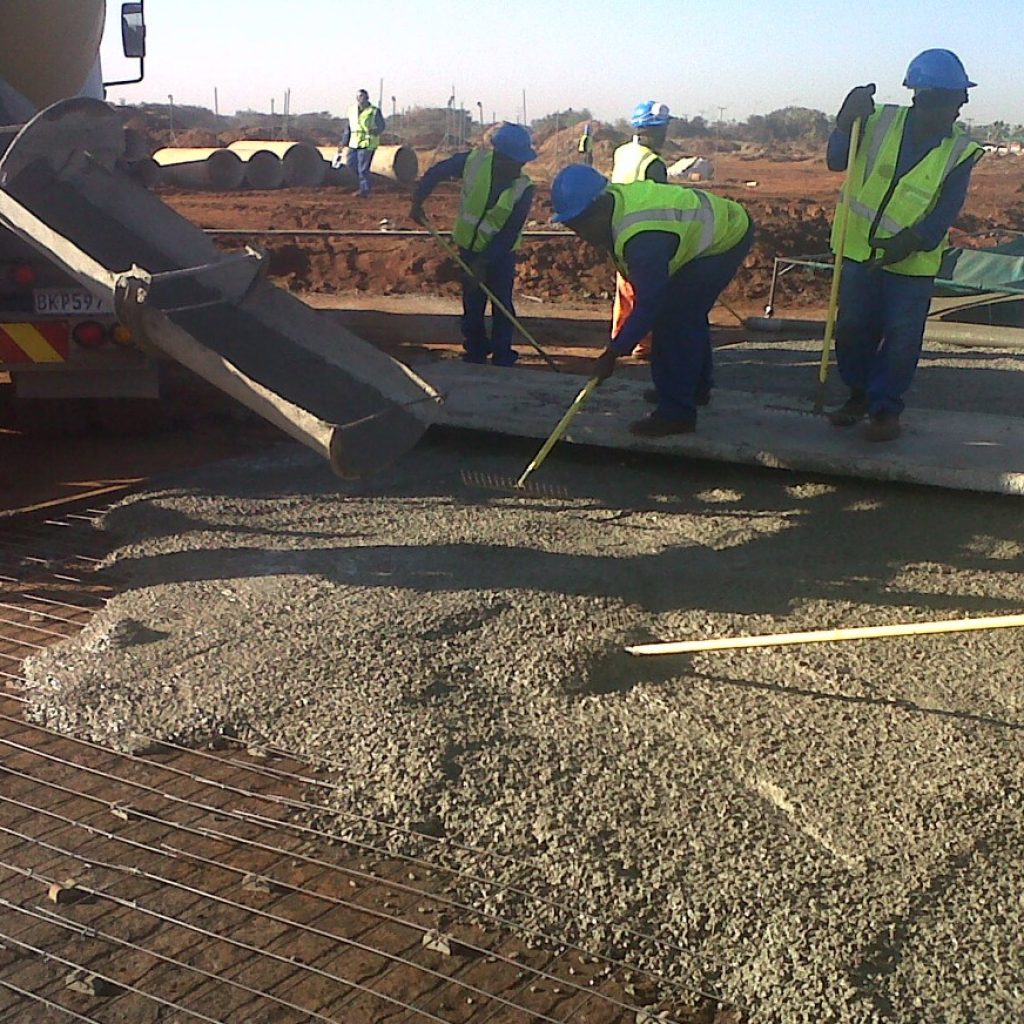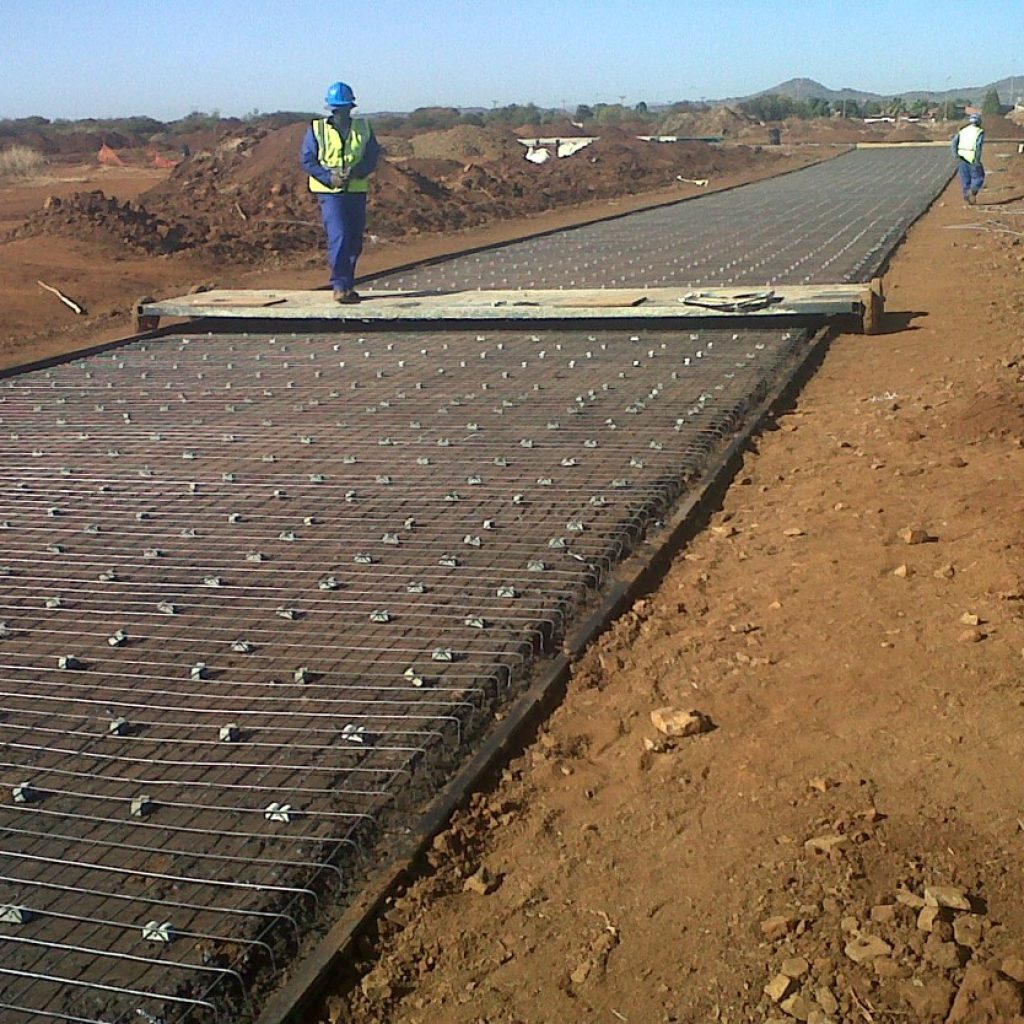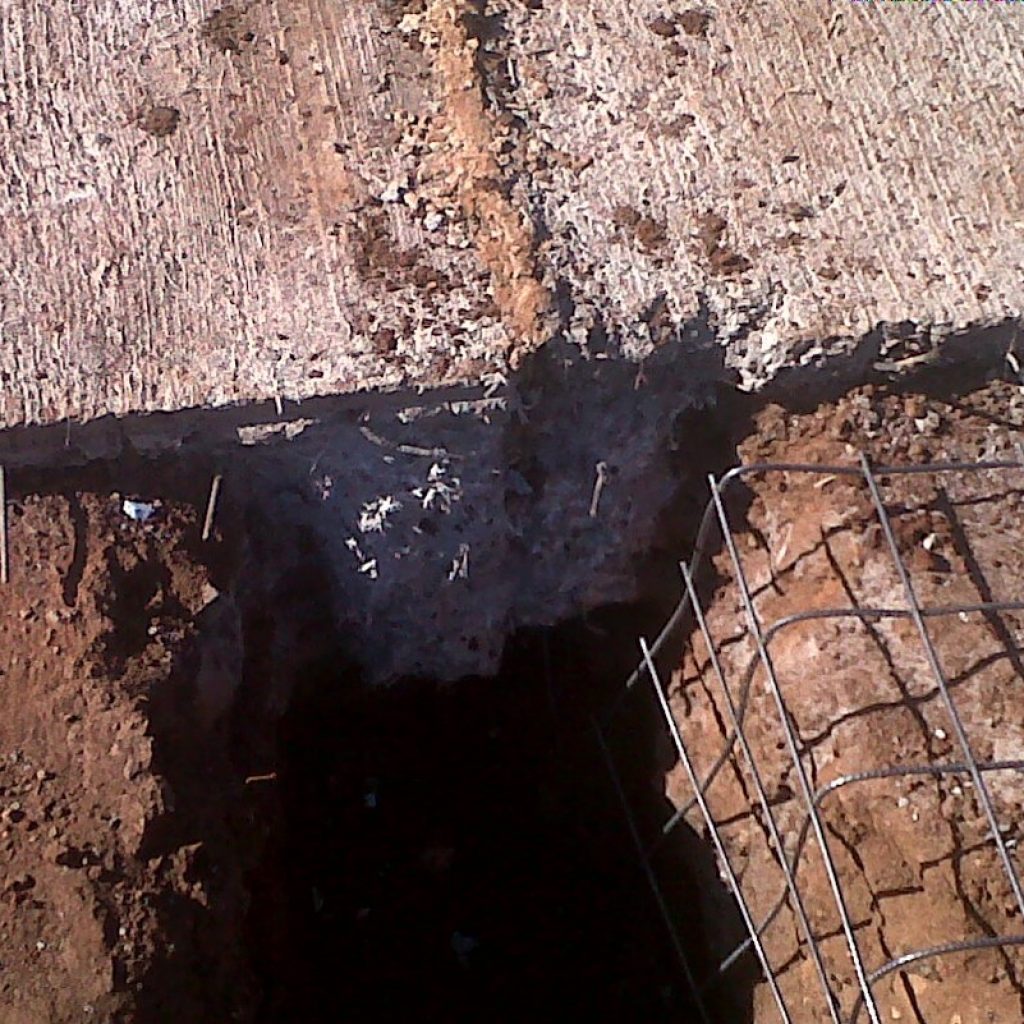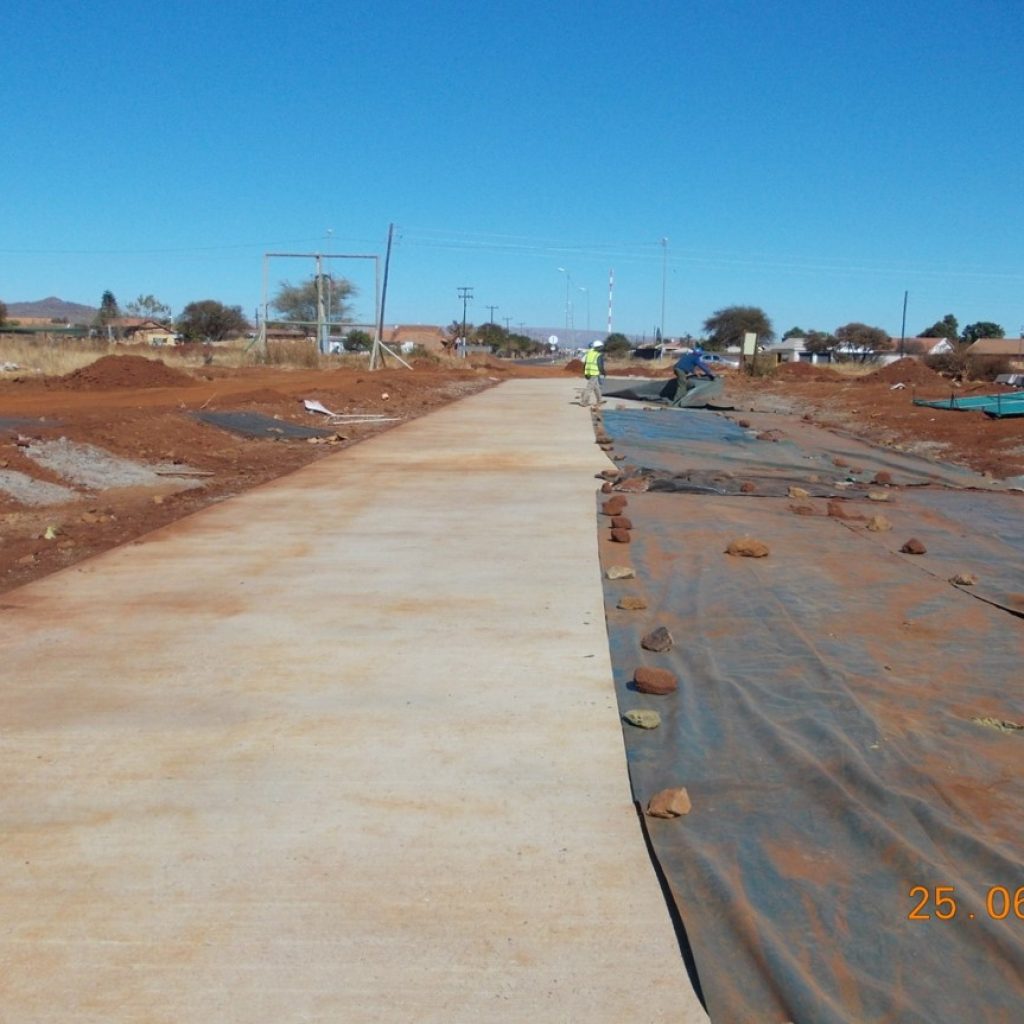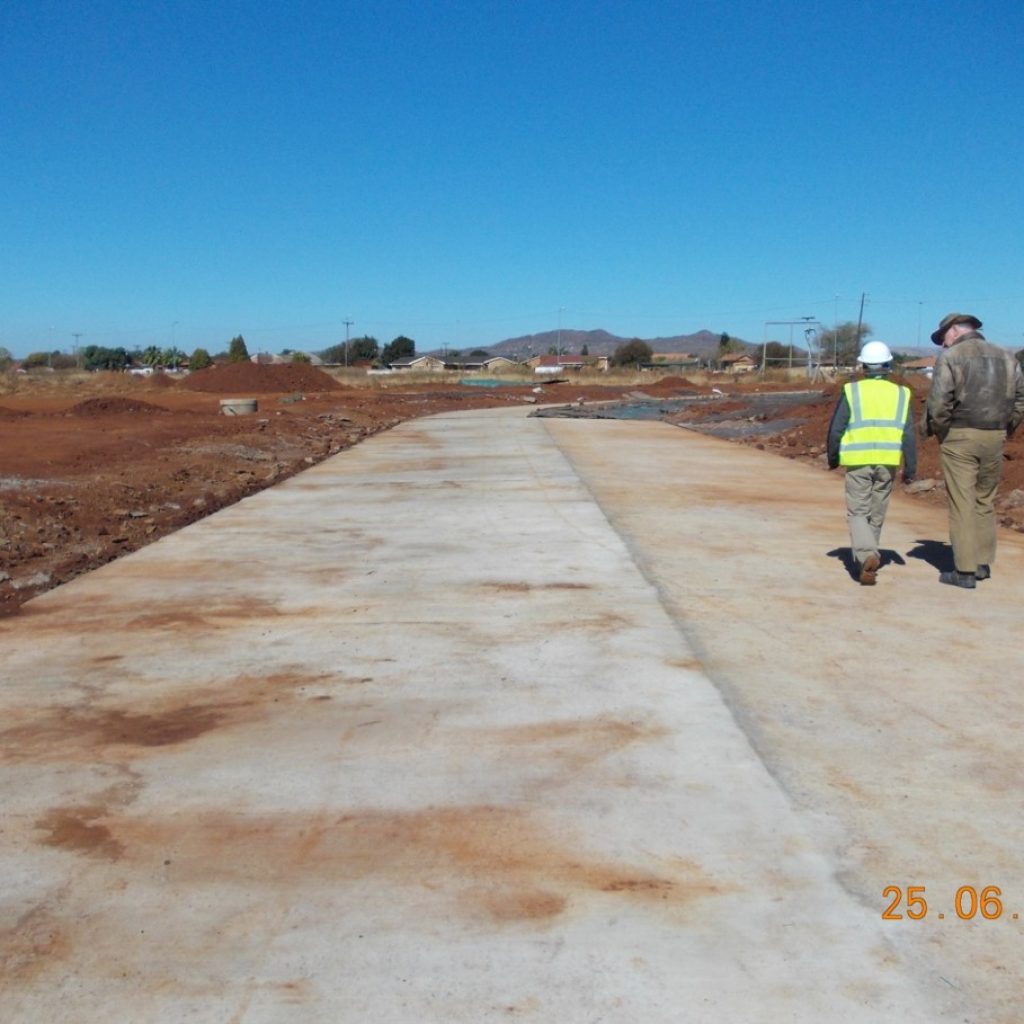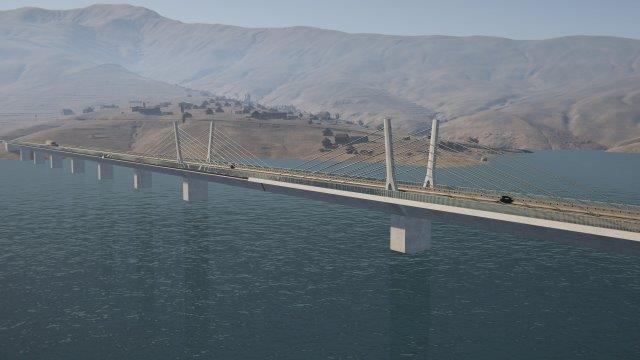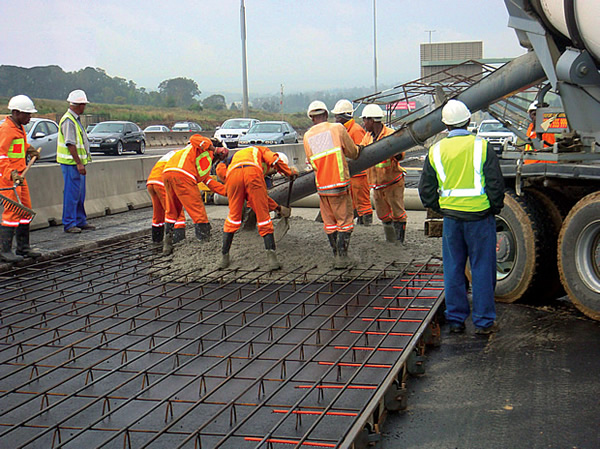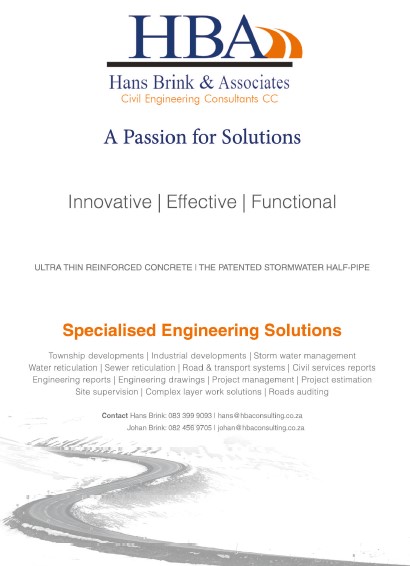
The decade of practical refinements in the use of Ultra Thin Reinforced Concrete Pavements (UTRCP) has resolved most of the challenges initially encountered when the Council for Scientific and Industrial Research (CSIR) introduced the technology to the market. Developed by the CSIR as a cost-competitive, durable and more labour-intensive alternative to conventional surfacing methods, Hans Brink, Managing Director of HBA Civil Engineering Consultants, has been at the forefront of implementing the technology and refining construction methods. The projects and refinements developed by HBA in consultation with the CSIR put Brink in the ideal position to illustrate UTRCP’s significance to future of roads.
Contact Hans Brink on 083 399 9093 | [email protected]
The layers of development
Thin concrete pavement technology is increasingly proving a solution for the problems South Africa is facing in terms of provincial and urban road construction and maintenance. UTRC is a relatively new construction method for urban and rural roads, replacing both the base layer and the conventional bituminous surfacing.
The UTRCP consists of a 50 mm layer of 30 MPa concrete, with reference 200 welded mesh reinforcing, placed in the centre. The concrete pavement is constructed continuously, in strips between two to six metres wide with anchors at both ends of a straight section. The sections on straight alignments may be up to several hundred meters between anchors. This effectively eliminates transverse expansion joints, and associated failures. The continuous concrete layer functions as stretched sheet of material, tied-down at each end; this significantly reduces the induced traffic loads transferred to the underlying layers. Compared to conventional road construction methods, UTRC achieves the same resistance to heavy truck traffic with significantly fewer supporting layers.
Continuous reinforcing spreads the load over a much larger area of the lower layers and this significantly reduces the development of potholes from any weak spots in the lower layers – such as those arising from water ingress. Concrete roads generally outlast bituminous roads, and require little to no maintenance.
The advantage of the thinner layer works for the construction of new slip lanes and lane widenings in urban areas is that the existing utility services, which frequently block road widenings, may be left intact and the widening built with minimum disruption to these services. For remote areas where asphalt or even block paving are not available, the 50 mm UTRCP option will yield a considerable cost saving. In addition, the reduction of the cost of the base layer makes this option cost competitive in comparison to conventional surfacing.
UTRC and the Emerging Contractor
Emerging Contractors are a critical factor of South Africa’s economic development. Technologies and Construction Methods with fewer barriers to entry and delivering quality and sustainable results are their lifeblood. UTRC exemplifies these enabling qualities:
- Substantially labour intensive
- Low capital costs
- Minimal transport challenges, with aggregate locally sourced
- Portable concreting skills (such as the local housing market)
Because so much of the work is done by hand, there is no investment required in heavy plants. Apart from the plant required for the sub layers, typical equipment requirements are a vibrating beam and a vibrator. The accessibility of this method can’t underestimated for emerging contractors.
Economical Material and Construction Costs
- Concrete supplied by Ready-mix plant is more freely available
- Minimal tendency to rut, shove or form potholes
- Existing road sub-structures frequently useable ‘as-is’
- Ideal for upgrading deteriorated roads by over laying
- Concrete road surfacing has a service life of 50 years or more, with no major maintenance required
- The previous failures of concrete surfacing at the joints are eliminated in Ultra Thin Concrete, due to the continuous design.
Environmental factors
- Concrete production has a smaller carbon footprint than hot-mix bitumen-based plants
- Concrete roads can utilize fly ash, a polluting by-product of thermal power plants
- Concrete is light in colour – resulting in the reflection of about 80% of the sun’s heat, compared to only about 5% reflection for asphalt.
The Road from Challenge to Solution
Some early challenges in the early test projects using UTRC included shrinkage and other types of cracks, varying in severity. Originally the UTRCP consisted of a 50mm layer of 30MPa concrete with Ref 193 welded wire mesh reinforcing (5,6mm @ 200 x 200 c/c) placed in the center the slab. The concrete had a slump of 75mm and was mixed on site. When placed, the concrete was leveled and compacted using a vibratory beam.
Some of the practical refinements developed by HBA Civils in consultation with Adrian Bergh of the CSIR included:
- The Ref 193 welded wire mesh was changed to Ref 200 with spacing of 100X100mm and 4mm thick wire to eliminate the block cracking
- A Spin Screed roller was used in place of the vibrating beam
- Polypropylene fibres were added to the mix to inhibit shrinkage cracking
- Concrete was obtained from ‘ready mix’ suppliers to address the problem of consistency
The following ‘road-scape’ represents the strength of industry performing additional development beyond the initial research, practically demonstrating long-term efficacy and cost competitiveness.
Transnet Capital Park, Pretoria
The main road carrying truck traffic was upgraded from a badly deteriorated asphalt road to a UTRC road.
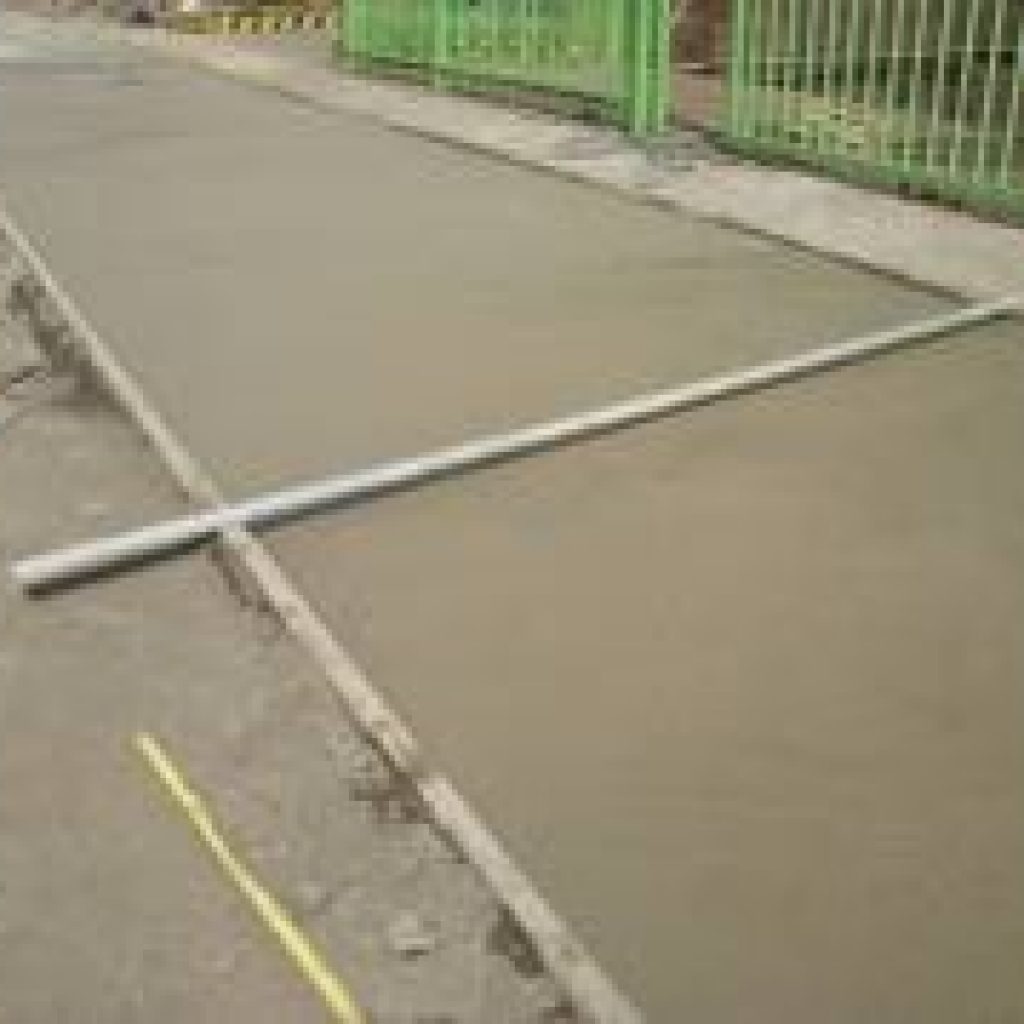
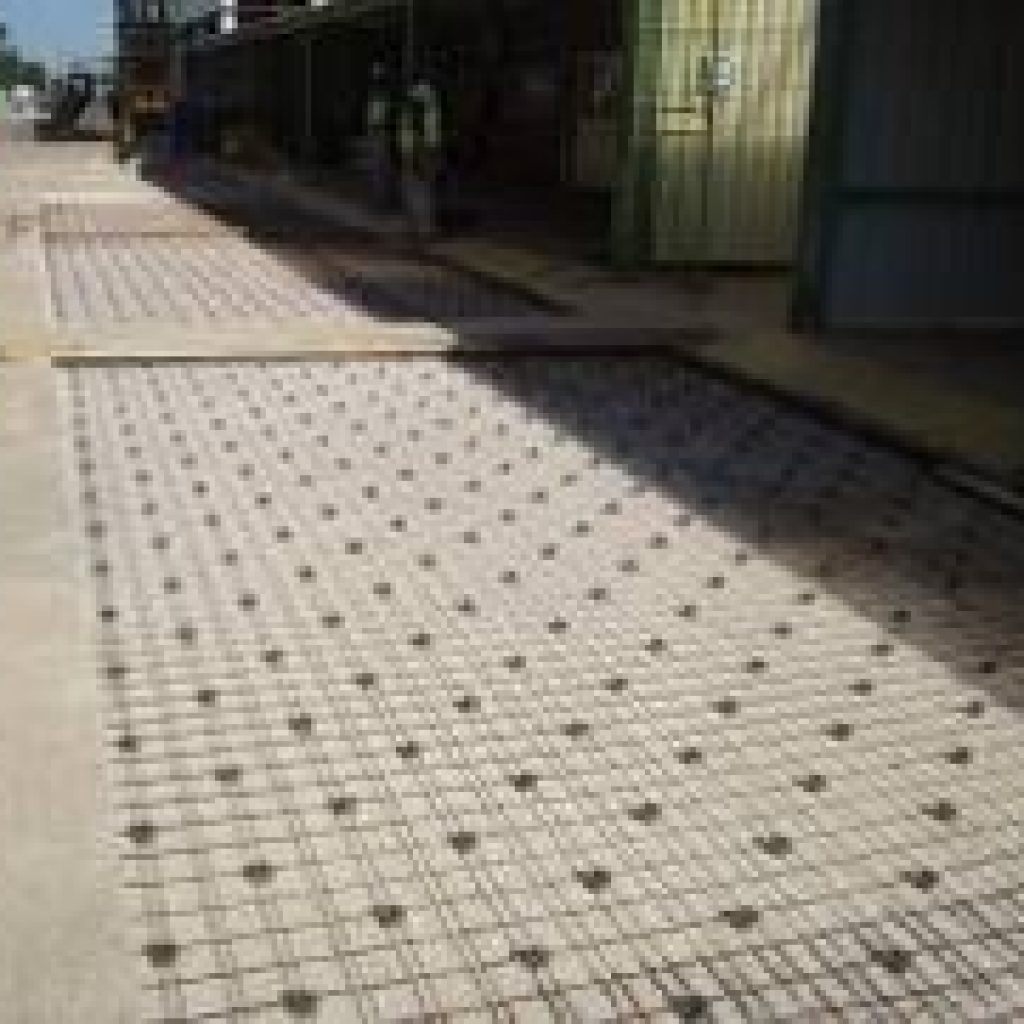
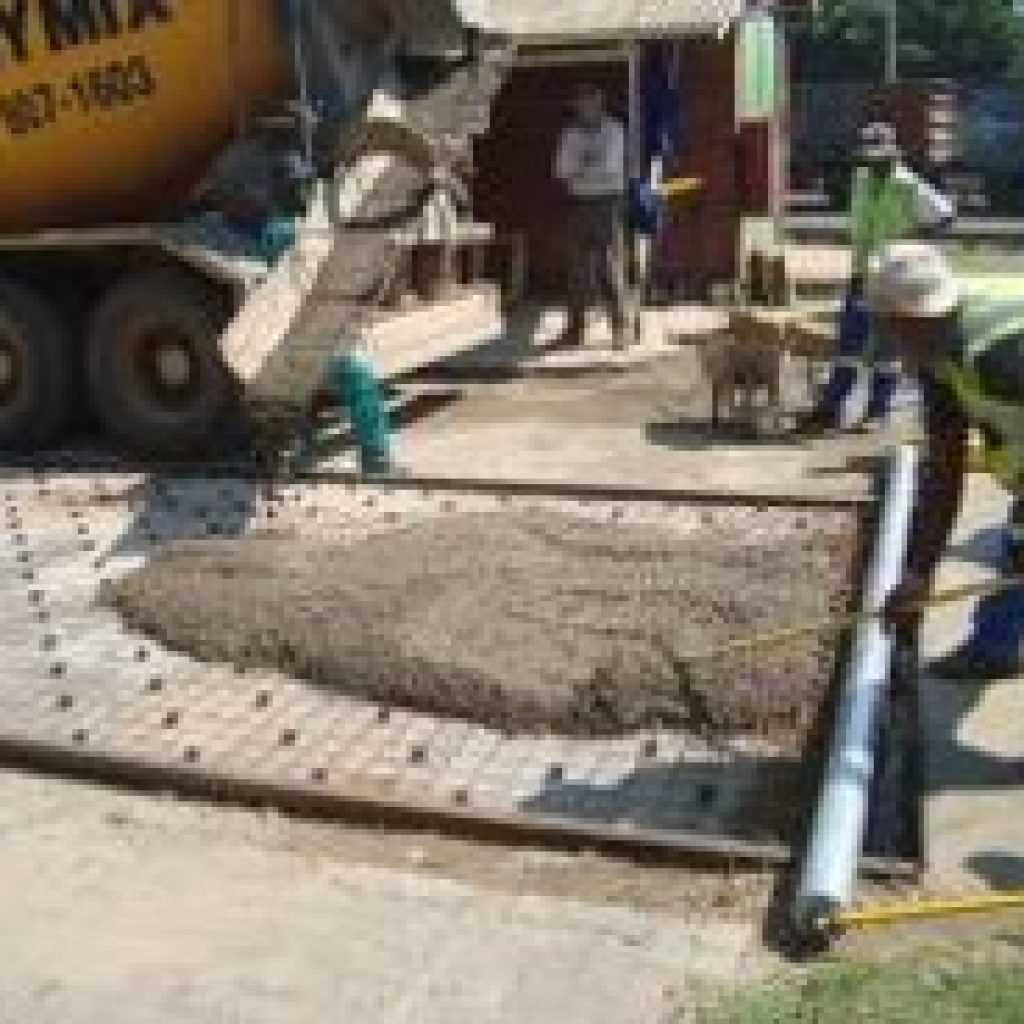
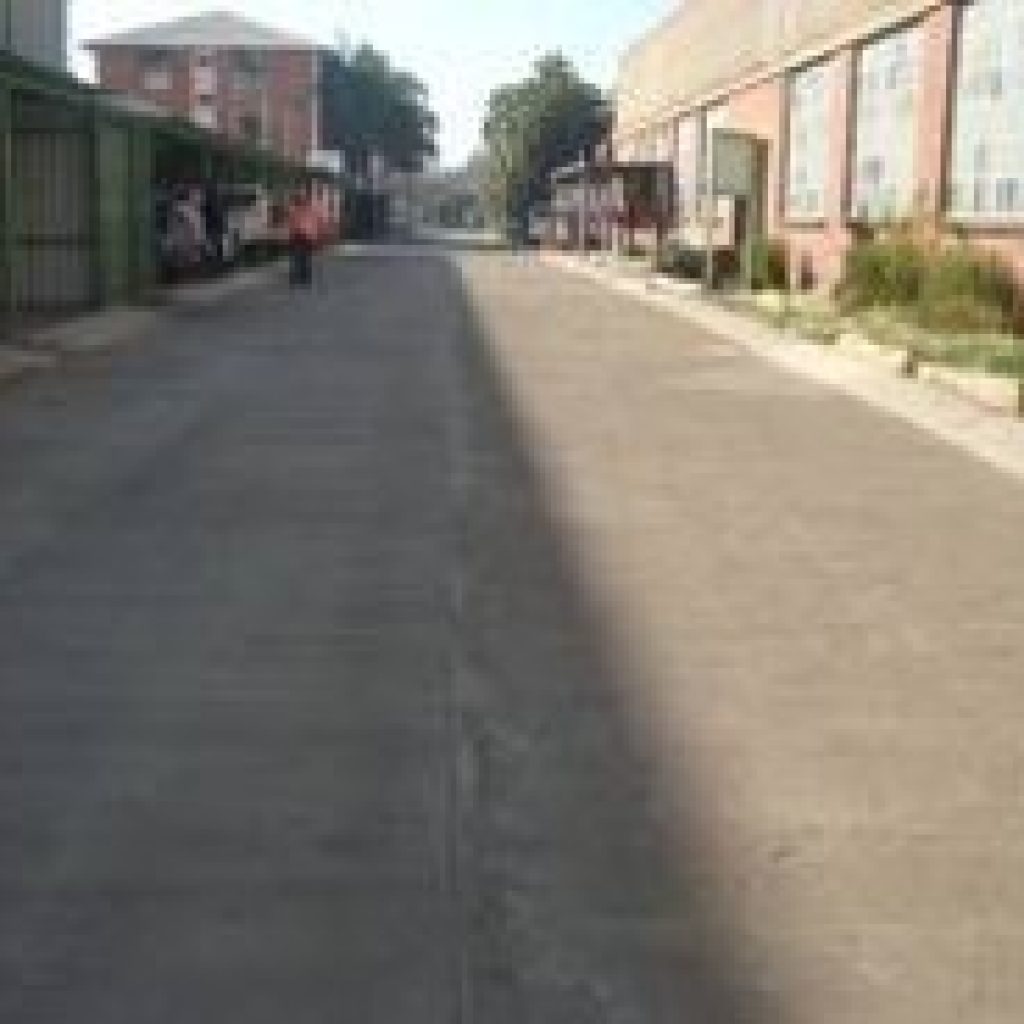
UTRCP road at Matsulu – Jericho Umgwaco road (East of Nelspruit)
This road was upgraded from a gravel road close to ground level, to a UTRCP road on a high fill, crossing a set of box culverts, over a river. To compensate for the possible settlement of the fill, several additional anchor beams were installed.
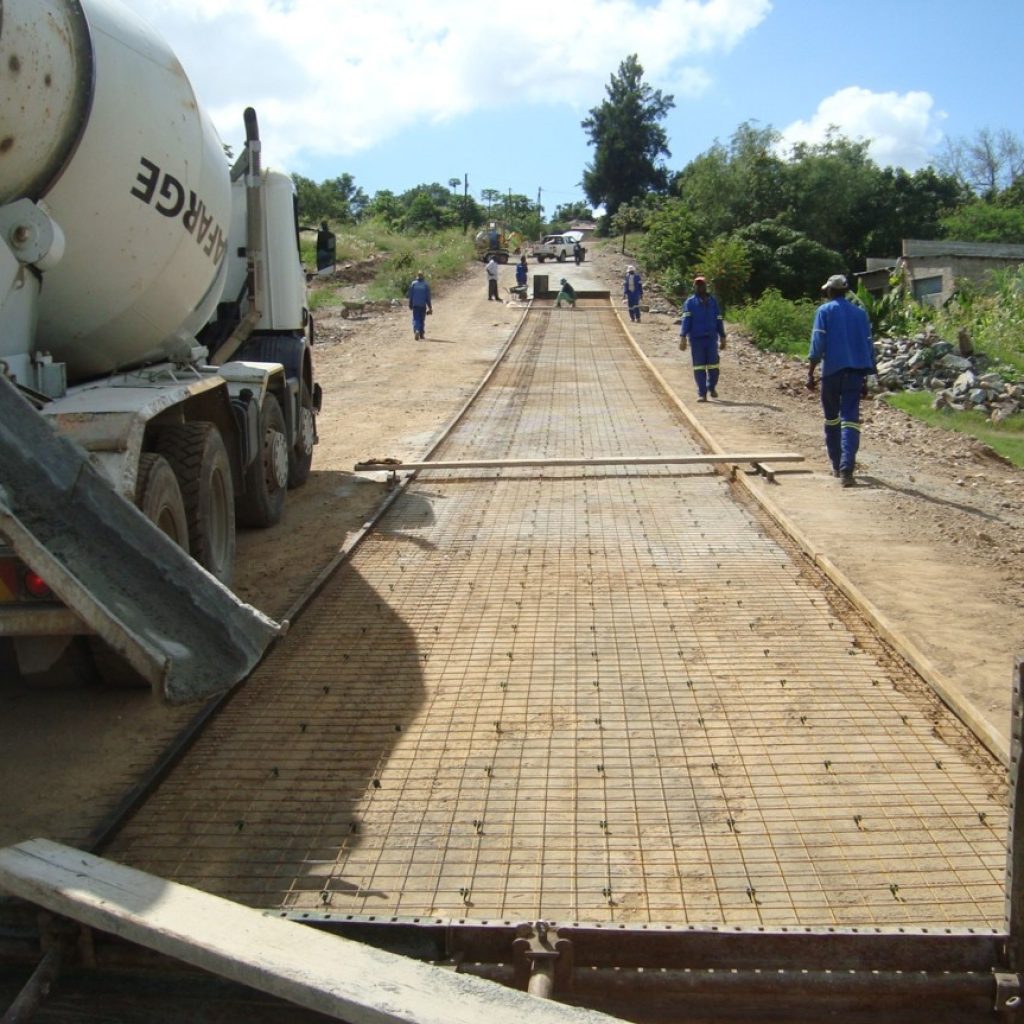
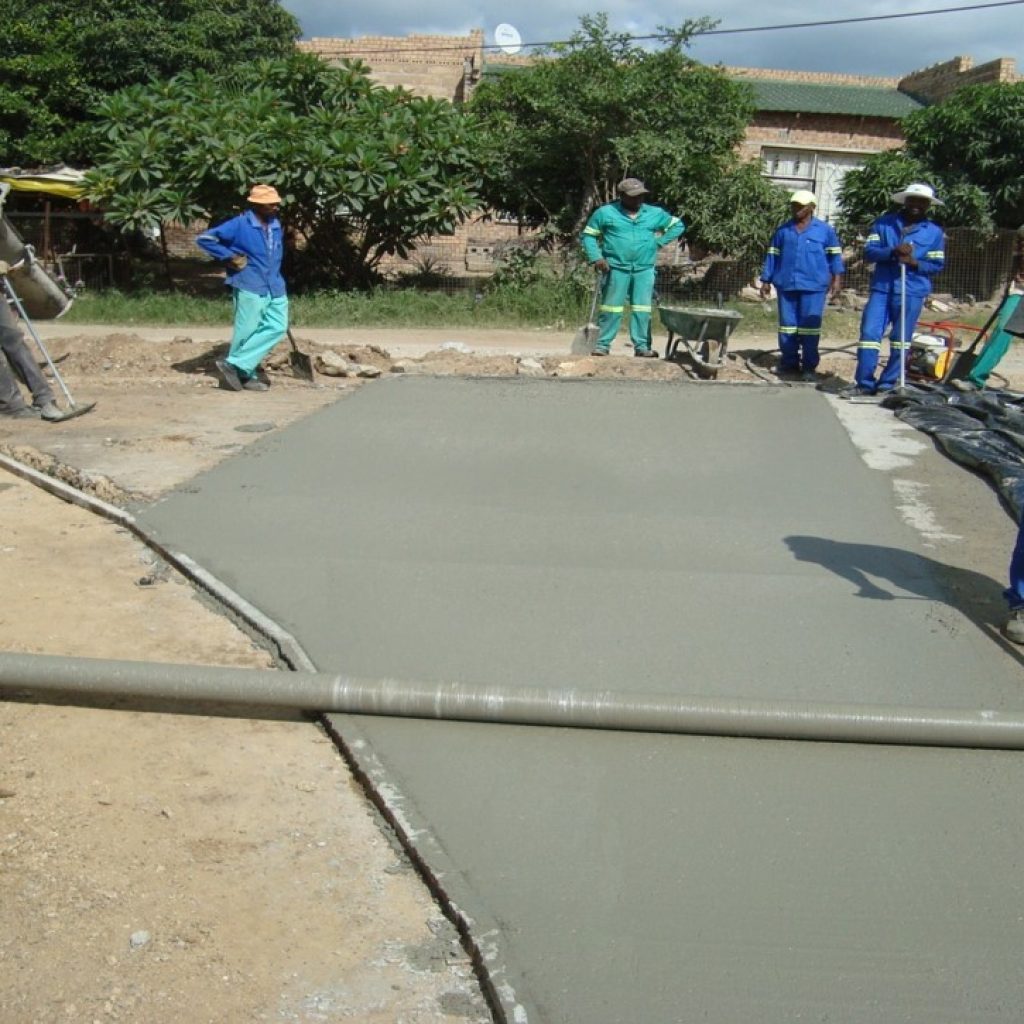
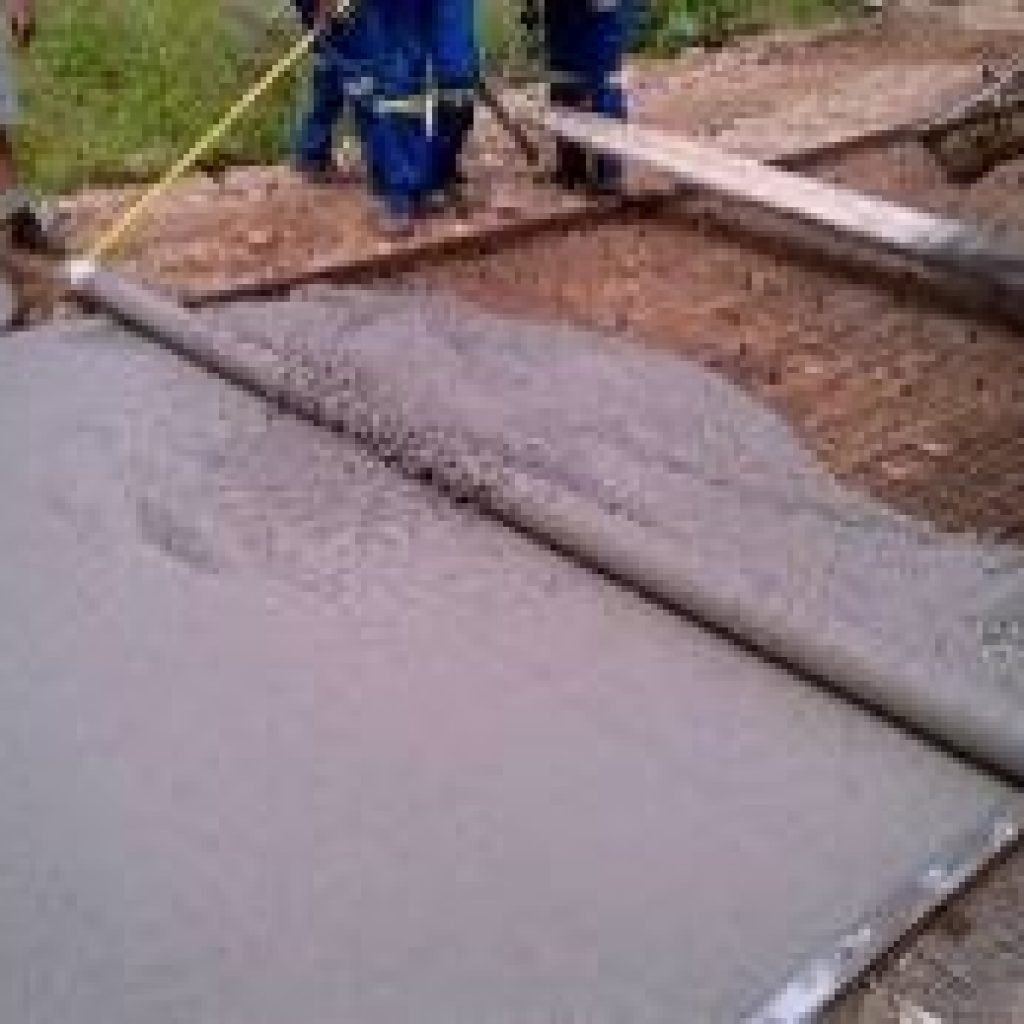
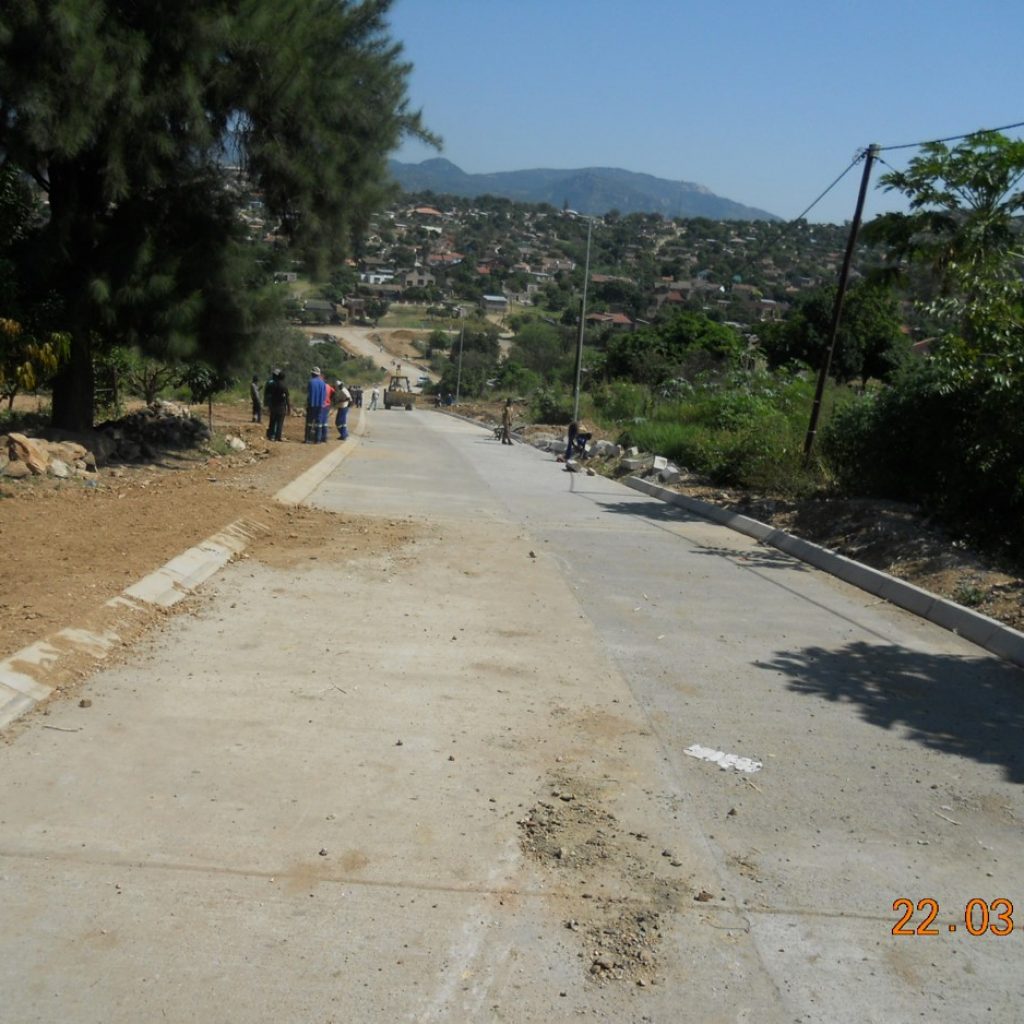
UTRCP road at Ga-Rankuwa Unit 10
Ga-Rankuwa Unit 10 is an economic housing development near Tshwane. The in situ material consists of a fair amount of red clay. Large savings came from using the in situ and other available on-site material, stabilized with lime for base and sub base to reach the moderate CBR strengths required.

